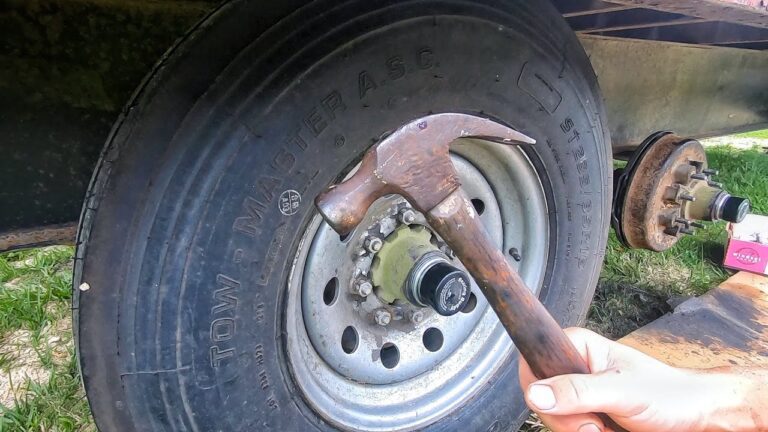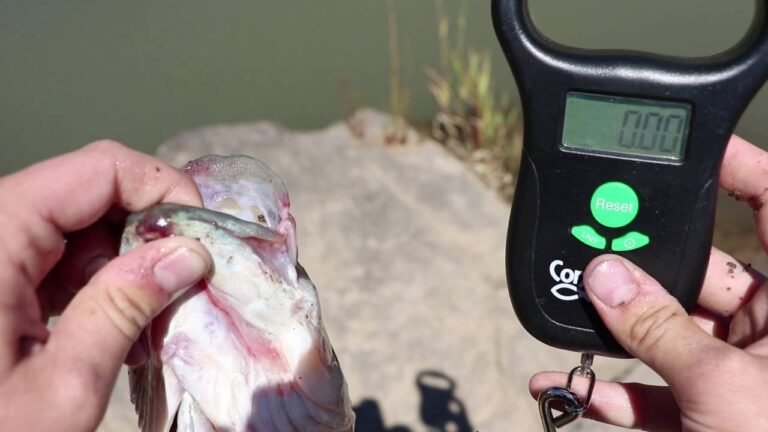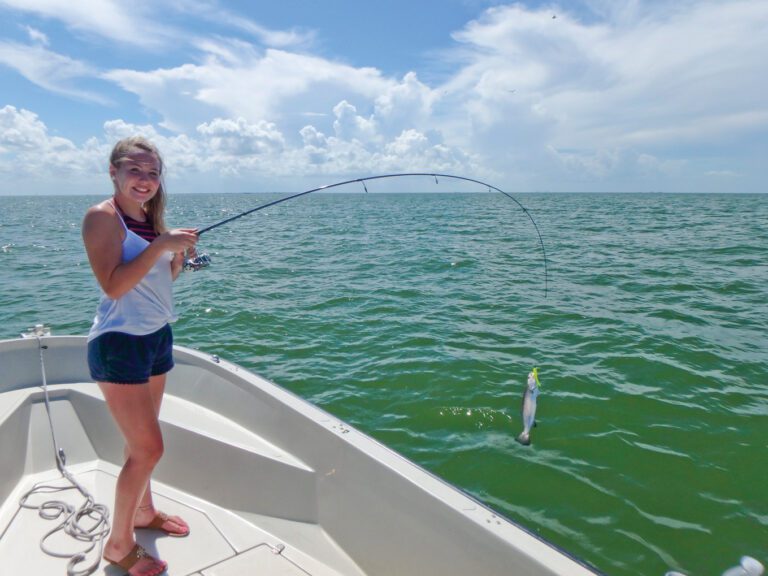How to Transport an Outboard Motor | Transporting Outboard Motors Safely 2023
Last Updated on August 16, 2023 by Jisan
If you need to transport an outboard motor, there are a few things you need to do to make sure it is secure. First, remove the propeller and stow it safely. Next, disconnect the fuel line and any other electrical connections.
Finally, support the engine with a strap or rope so it does not move around during transport.
- Find a suitable way to secure the outboard motor to the back of the transport vehicle
- This will usually involve using straps or rope to tie down the motor
- Carefully lift the outboard motor onto the transport vehicle
- Try to avoid bumping or dropping the motor, as this could damage it
- Once the outboard motor is on the transport vehicle, make sure it is securely fastened down so that it cannot move around during transit
- Transport the outboard motor to its destination and carefully unload it from the transport vehicle
- Again, try to avoid damaging the motor while doing so
How to Transport an Outboard Motor on Its Side
If you need to transport your outboard motor on its side, there are a few things you need to do to make sure it is safe and secure. First, remove the propeller from the motor. This will help prevent damage to the propeller and also keep it from getting caught on anything while you are transporting it.
Next, use some straps or tie-downs to secure the motor to the side of your vehicle. Make sure that the straps are tight and that the motor is secured in a way that will prevent it from moving around during transport. Finally, cover the motor with a tarp or something similar to protect it from weather and debris while you are transporting it.
With these simple tips, you can safely transport your outboard motor on its side without worrying about damage or safety issues.
How to Transport a 2 Stroke Outboard Motor
If you’re like most boat owners, you probably don’t give much thought to how you transport your outboard motor. After all, it’s not a particularly delicate piece of machinery. However, if you’re planning on transporting a 2 stroke outboard motor, there are a few things you should keep in mind to ensure that it arrives safely at its destination.
First and foremost, always consult the owner’s manual for specific instructions on how to transport your particular model of outboard motor. There may be special requirements that need to be followed in order to avoid damage during transit.
Assuming that there are no special instructions from the manufacturer, the general rule of thumb is to secure the outboard motor so that it can’t move around during transport.
This usually means attaching it firmly to something in the bed of a truck or on a trailer. If possible, try to position the outboard so that it’s pointing straight up; this will minimize the risk of oil leaks during transit.
Once the outboard is secured, cover it with a tarp or other protective material to shield it from weather and debris.
And finally, make sure that any loose parts (such as propellers) are securely fastened so they don’t come loose and cause damage during transport.
By following these simple tips, you can rest assured knowing that your 2 stroke outboard will arrive safe and sound at its final destination.
Transporting 4 Stroke Outboard Motor
Whether you’re a professional angler or a weekend boater, at some point you’ll need to transport your 4 stroke outboard motor. And while it may seem like a daunting task, with a little bit of preparation it can be easily accomplished. Here are some tips on how to properly transport your 4 stroke outboard motor:
1. Remove the propeller: This is probably the most important step in transporting your 4 stroke outboard motor. Not only will it prevent damage to the propeller, but it will also make the motor much lighter and easier to handle.
2. Drain the oil: Before transporting your 4 stroke outboard motor, be sure to drain all of the oil from the engine.
This will help prevent any spills or leaks during transport.
3. Disconnect the battery: Another crucial step in preparing your 4 stroke outboard motor for transport is to disconnect the battery. This will help prevent any short circuits that could occur during transit.
4. Secure loose parts: Be sure to secure any loose parts on your 4 stroke outboard motor before transporting it. This includes things like spark plugs, fuel lines, and power cables. You don’t want these parts bouncing around during transit and potentially causing damage.
Can You Lay an Outboard Motor on Its Side
If you’re like most people, you probably think that it’s not possible to lay an outboard motor on its side. After all, these engines are designed to be mounted upright, so how could they possibly work if they were laid down? Well, it turns out that you can indeed lay an outboard motor on its side, and there are actually a few good reasons why you might want to do so.
First of all, laying your outboard motor on its side can make it easier to transport. If you’re bringing your boat and engine to the launch ramp on a trailer, for example, it can be much easier to load and unload the engine if it’s already in the correct position. Additionally, some people find that their outboard motors run cooler when they’re lying down on their sides.
This is because the cooling water has a shorter distance to travel when the engine is horizontal, which helps keep things cooler overall.
Of course, there are also a few potential downsides to consider before you start laying your outboard motor down on its side. For one thing, this position can put stress on certain parts of the engine, so it’s important to check with your manufacturer or dealer before doing so.
Additionally, laying an outboard motor on its side can make it more difficult to access certain parts of the engine for maintenance purposes. So if you’re planning on doing any work on your engine yourself, it’s best to keep it in the upright position.
Transporting a Yamaha 4 Stroke Outboard
Assuming you would like a blog post discussing how to transport a Yamaha 4 Stroke Outboard:
“Transporting your Yamaha 4 Stroke Outboard”
We all know that feeling.
You just bought a new Yamaha 4 stroke outboard and you can’t wait to get it in the water. But first, you have to figure out how to get it there. Here are some tips on transporting your brand new outboard so you can start enjoying it as soon as possible.
The most important thing when transporting any type of boat engine is making sure it is secure. You don’t want your investment bouncing around or tipping over while en route. For smaller engines, this might mean strapping it down in the back of your pick-up truck.
For larger engines, you might need a trailer specially designed for hauling an outboard motor. Either way, take the time to do it right so you can relax and enjoy the ride knowing your engine is safe and sound.
Once you have your engine secured, pay attention to the weather conditions before setting off.
If it’s hot outside, be sure to give your engine plenty of ventilation so it doesn’t overheat during transport. If it’s cold outside, make sure any exposed metal parts are protected from corrosion by covering them with a light coat of oil before loading up for the journey ahead. By taking these simple precautions, you can ensure that your engine will arrive at its destination ready to hit the water and provide years of enjoyment.



Credit: www.shortypen.com
Can You Transport Outboard Motor Laying Down?
Yes, you can transport an outboard motor lying down. There are a few things to keep in mind when doing so, however. First, make sure that the engine is properly secured so that it doesn’t move around or fall over while in transit.
Second, be aware that transporting an outboard motor in this position may put strain on the engine’s seals and gaskets, so it’s important to check them for leaks before and after transport.
How Do You Transport an Outboard Motor in the Back of a Truck?
If you’re transporting an outboard motor in the back of a truck, there are a few things you need to keep in mind. First, make sure the motor is properly secured. You don’t want it bouncing around or tipping over while you’re driving.
Second, be aware of the weight distribution. The bulk of the weight should be over the axle for stability. Finally, if you’re hauling a large outboard motor, consider using a trailer to help distribute the weight and provide better stability.
Should Outboard Motor Be Up Or down When Trailering?
When trailering your boat, you will want to ensure that your outboard motor is in the up position. This will help to prevent any potential damage to the motor while in transit. It is also a good idea to secure the outboard motor with a strap or tie down to further prevent any movement or damage.
How Do You Secure an Outboard Motor for Transport?
When transporting your outboard motor, it’s important to secure it properly to prevent damage. There are a few different ways you can do this:
1. If you have a trailer, you can tie down the motor using straps or rope.
Make sure the straps or rope are securely fastened and will not come loose during transport.
2. If you’re not using a trailer, you can put the outboard motor in the back of your vehicle and secure it with straps or rope. Again, make sure everything is tight and won’t come loose during transport.
3. You can also purchase special outboard motor cradles that strap onto your vehicle. This is a more expensive option, but it will provide extra protection for your motor during transport.
Whichever method you choose, just be sure to take care in securing your outboard motor so that it arrives safely at its destination!
DIY Outboard Dolly Transportation
Conclusion
If you’re planning on transporting an outboard motor, there are a few things you need to do in order to ensure that it arrives safely. First, make sure that the engine is properly secured to the boat. Next, secure the boat to the trailer so that it doesn’t shift during transport.
Finally, check all of the fluids and fuel levels before you head out on the road. By following these simple tips, you can rest assured knowing that your outboard motor will arrive at its destination safely and without any damage.




